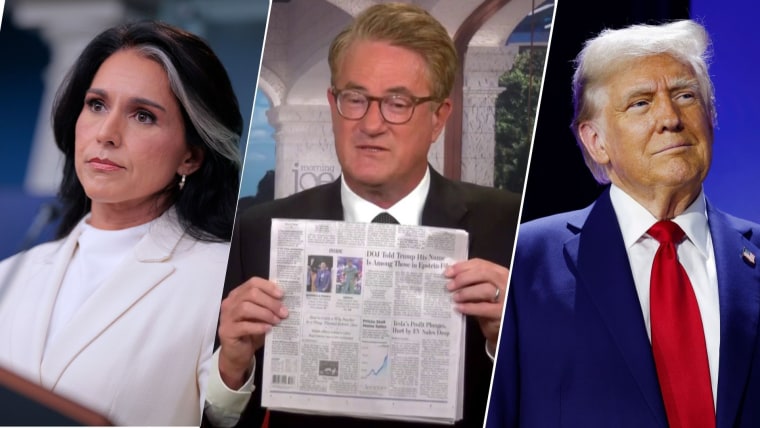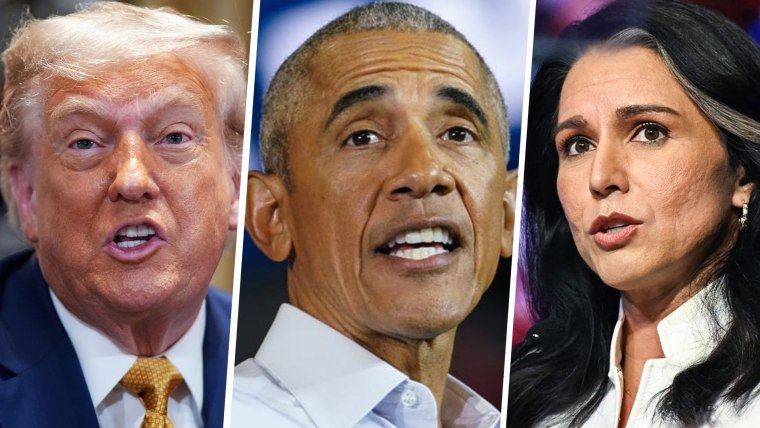“A rule for the ages.” This is what Justice Neil Gorsuch claimed the Supreme Court was deciding when it heard oral arguments on President Donald Trump's claim of “absolute immunity” in April 2024. Two months later, the court did indeed hand down such a rule, endorsing Trump’s view that a former president cannot be criminally indicted for “official acts” carried out during the course of his presidency.
The rationale for granting immunity was ostensibly to protect former presidents; without it, the court argued, prosecutions by current administrations of their predecessors “would quickly become routine.”
On the surface, the court’s rule makes sense, in a Jedi-mind-trick kind of way.
So much for that. President Trump’s latest baseless accusations that former President Barack Obama committed “treason” in investigating Russia’s election interference in 2016 — accusations made by his own director of national intelligence, Tulsi Gabbard, and for which his attorney general has created an investigative “strike force” — shows that, far from deterring such prosecutions, the court’s “rule for the ages” has made them easier.
Writing for the majority in Trump v. United States, Chief Justice John Roberts invoked separation of powers concerns to justify immunizing the president’s official acts. According to the court, allowing prosecutions of former presidents would “chill” the functions of the executive branch by making presidents afraid to take bold actions out of fear that they might later be charged with a crime. The due process roadblocks that exist in our criminal justice system, like the requirement of an indictment by a grand jury, were not enough to protect the president’s “unique position in the Constitutional scheme,” in the Court’s view. In other words, a former president is no “ordinary” defendant.
On the surface, the court’s rule makes sense, in a Jedi-mind-trick kind of way. And from the vantage point of June 2024, it seemed like, in the event of a Trump win in the presidential election later that year, the decision would prevent him from using his law enforcement powers to target his predecessors. In fact, Obama’s investigation into an attack by a foreign adversary on the U.S. electoral system is precisely the kind of “core” Article II function that should be absolutely immune from prosecution.

But there are two important nuances to the court’s sweeping rule that makes it easier for Trump to go after his predecessors.
The first is that the court took any inquiry into the president’s motive for using his official levers of power off the table. You might remember this as the “Seal Team Six” hypothetical — for the court, there is no difference between the president using special forces to rescue American hostages or to assassinate his political enemies; both are protected from criminal liability. What this means is that Trump effectively has a green light to use his law enforcement powers for corrupt and personal ends, without any fear that he will be held accountable when he leaves office.
More importantly, Trump can “officially” order his underlings to gin up an investigation and even make up evidence. This is exactly what the court decided with respect to Justice Department official Jeffrey Clark, who, under Trump’s orders, drafted letters making false claims of voter fraud in several states to convince them to replace their slates of electors. The court concluded that Trump was absolutely immune from criminal prosecution for any conduct related to his authority over prosecutions of the Justice Department, even if they involved “sham” investigations or ones “proposed for an improper purpose.”
As it stands, there is absolutely no downside to Trump not only to go after his predecessors, but to also order his intelligence and law enforcement authorities to fabricate “evidence” to substantiate his accusations.
As it stands, there is absolutely no downside to Trump going after his predecessors or ordering his intelligence and law enforcement authorities to fabricate “evidence” to substantiate his accusations. It may be true that if Trump’s Justice Department were to try to formally indict Obama, the charges would eventually be dismissed by a court on immunity grounds. But there is a long runway from investigation to formal charges, and investigations alone can harass and intimidate subjects, including former presidents. And if Trump’s officials can make up evidence of wrongdoing, they can certainly do so regarding allegedly “unofficial” acts, which would not have any immunity at all.
The only “protection” afforded by the perverse incentives in the Supreme Court’s immunity decision is for bad-faith actors in the Oval Office — something we are seeing play out in real time. Perhaps recognizing the reality of the danger the court created, Obama himself issued a rare statement, countering the allegations made by Trump against him. Unfortunately, the court’s “rule for the ages” — and its attendant consequences — is one that both he and the country are now stuck with.
